
Asmara, or Asmera, is the capital and most populous city of Eritrea, in the country's Central Region. It sits at an elevation of 2,325 metres (7,628 ft), making it the sixth highest capital in the world by altitude and the second highest capital in Africa. The city is located at the tip of an escarpment that is both the northwestern edge of the Eritrean Highlands and the Great Rift Valley in neighbouring Ethiopia. In 2017, the city was declared as a UNESCO World Heritage Site for its well-preserved modernist architecture. According to local traditions, the city was founded after four separate villages unified to live together peacefully after long periods of conflict. Asmara had long been overshadowed by nearby Debarwa, the residence of the Bahr Negash or the governor of the coastal province, however it still existed as a major settlement for over half a millennium and enjoyed some importance as it stood on the trade route to Massawa. Asmara first rose to prominence during the 20th century, when it became capital of Italian Eritrea. Under Italian rule the city of Asmara experienced rapid urbanization and modernization.

The AIDS epidemic, caused by HIV, found its way to the United States between the 1970s and 1980s, but was first noticed after doctors discovered clusters of Kaposi's sarcoma and pneumocystis pneumonia in homosexual men in Los Angeles, New York City, and San Francisco in 1981. Treatment of HIV/AIDS is primarily via the use of multiple antiretroviral drugs, and education programs to help people avoid infection.

Solvang is a city in Santa Barbara County, California, United States. Located in the Santa Ynez Valley, the population was 6,126 at the 2020 census, up from 5,245 at the 2010 census. Solvang was founded in 1911 and incorporated as a city on May 1, 1985. Solvang has been described as "The Danish Capital of America".
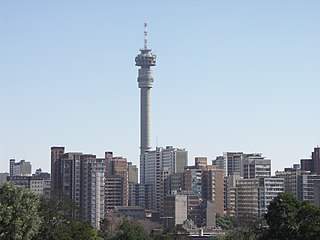
Hillbrow is an inner city residential neighbourhood of Johannesburg, Gauteng Province, South Africa. It is known for its high levels of population density, unemployment, poverty, prostitution and crime.

John Howard Griffin was an American journalist and author from Texas who wrote about and championed racial equality. He is best known for his 1959 project to temporarily pass as a black man and journey through the Deep South in order to see life and segregation from the other side of the color line first-hand. He first published a series of articles on his experience in Sepia magazine, which had underwritten the project, then later published an expanded account in book form, under the title Black Like Me (1961). This was later adapted into a 1964 film of the same name. A 50th anniversary edition of the book was published in 2011 by Wings Press.

Black Like Me, first published in 1961, is a nonfiction book by journalist John Howard Griffin recounting his journey in the Deep South of the United States, at a time when African-Americans lived under racial segregation. Griffin was a native of Mansfield, Texas, who had his skin temporarily darkened to pass as a black man. He traveled for six weeks throughout the racially segregated states of Louisiana, Mississippi, Alabama, Arkansas, and Georgia to explore life from the other side of the color line. Sepia Magazine financed the project in exchange for the right to print the account first as a series of articles.
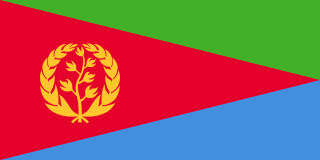
The music of Eritrea, is a diverse mix of traditional and popular styles originating from ancient to modern times. The nine major ethnic groups of Eritrea—Afar, Bilen, Hedareb, Kunama, Nara, Rashaida, Saho, Tigre and Tigrinya—celebrate autonomous music-making expressed through a rich heritage of vocalists, instrumentalists and activities within the country and throughout the international diaspora. The country's music is informed by a range of ethnolinguistic group dynamics in the region, by its shared pre-colonial history with and revolutionized independence from Ethiopia, and by its exposure to globalized American music in the mid-twentieth century.
Mark Adrian Collett is a British neo-Nazi political activist. He was formerly chairman of the Young BNP, the youth division of the British National Party (BNP), and was director of publicity for the party.
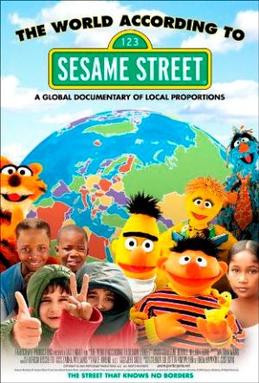
The World According to Sesame Street is a 2006 documentary film created by Participant Productions, looking at the cultural impact of the children's television series Sesame Street, and the complexities of creating international adaptations. It focuses on the adaptations of Sesame Street in Bangladesh (Sisimpur), Kosovo, and South Africa. The film premiered at the 2006 Sundance Film Festival in the documentary competition.

Black Like Me is a 1964 American drama film based on the 1961 book Black Like Me by John Howard Griffin. The journalist disguised himself to pass as an African-American man for six weeks in 1959 in the Deep South to report on life in the segregated society from the other side of the color line. The film was directed by Carl Lerner and the screenplay was written by Carl and Gerda Lerner. The film stars James Whitmore, Sorrell Booke and Roscoe Lee Browne.
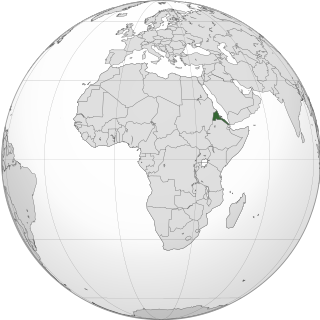
Lesbian, gay, bisexual, transgender, and queer (LGBTQ) people in Eritrea face severe challenges not experienced by non-LGBTQ residents. Homosexual acts are illegal in Eritrea; typically punishable by up to three years in prison. LGBTQ persons are reportedly prosecuted by the government and additionally face hostility amongst the broader population.
Boikarabelo is a rural community located in Magaliesburg, South Africa dedicated to helping and providing a home for economic and AIDS orphans and the poor. The site includes an orphanage, school, medical clinic and village. It was founded in 1990. Boikarabelo was featured in the documentary film Angels in the Dust.

The Unseen is a 1980 American slasher film directed and written by Danny Steinmann, and starring Stephen Furst, Barbara Bach, Sydney Lassick, and Lelia Goldoni. Its plot follows three female news reporters who arrive in Solvang, California, to cover the town's annual Danish festival, and end up staying in the Victorian home of a middle-aged couple harboring a dark secret in their basement.
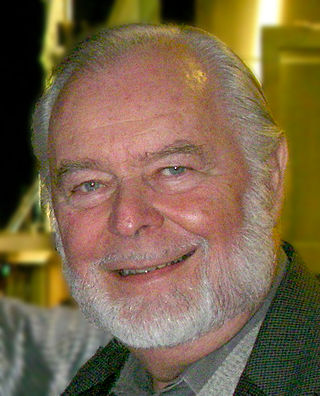
George Edward Griffin is an American author, filmmaker, lecturer, and a conspiracy theorist. Griffin's writings promote a number of right-wing views and conspiracy theories regarding politics, defense and health care. In his book World Without Cancer, he argued in favor of a pseudo-scientific theory that asserted cancer to be a nutritional deficiency curable by consuming amygdalin. He is the author of The Creature from Jekyll Island (1994), which advances debunked conspiracy theories about the Federal Reserve System. He is an HIV/AIDS denialist, supports the 9/11 Truth movement, and supports the specific John F. Kennedy assassination conspiracy theory that Oswald was not the assassin. He also believes that the Biblical Noah's Ark is located at the Durupınar site in Turkey.

Without the King is a 2007 documentary film by Michael Skolnik, an American filmmaker. It follows problems of Swaziland, a landlocked country in southern Africa.
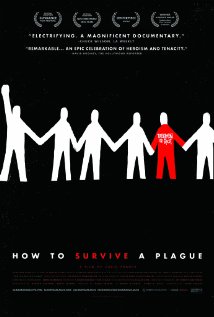
How to Survive a Plague is a 2012 American documentary film about the early years of the AIDS epidemic, and the efforts of activist groups ACT UP and TAG. It was directed by David France, a journalist who covered AIDS from its beginnings. France's first film, it was dedicated to his partner Doug Gould who died of AIDS-related pneumonia in 1992.
Prostitution in South Sudan is legal but related activities such as soliciting or brothel-keeping are illegal.

Fire in the Blood is a 2013 documentary film by Dylan Mohan Gray depicting what it claims is the intentional obstruction of access to low-cost antiretroviral drugs used in the treatment of HIV/AIDS to people in Africa and other parts of the global south, driven by multinational pharmaceutical companies holding patent monopolies and various Western governments consistently supporting these companies. The film claims that the battle against what it refers to as a "genocidal blockade," which it estimates to have resulted in no less than ten to twelve million completely unnecessary deaths, was fought and won.

Kiki is an American-Swedish co-produced documentary film, released in 2016. It takes place in New York City, and focuses on the "drag and voguing scene [and] surveys the lives of LGBT youth of color at a time when Black Lives Matter and trans rights are making front-page headlines". The film was directed by Sara Jordenö and considered an unofficial sequel to the influential 1990 film Paris Is Burning, the film profiles several young LGBT people of colour participating in contemporary LGBT African American ball culture.

The history of cinema in Eritrea dates back to the country's colonial rule under the Kingdom of Italy. In connection with the growth of Italian cinema in the 1930s, so too did the rise of cinema occur in Asmara, Eritrea. In 1937, Asmara's Opera was converted into a dual-use theatre and cinema. By the following year, Asmara had a total of nine movie theatres.
















